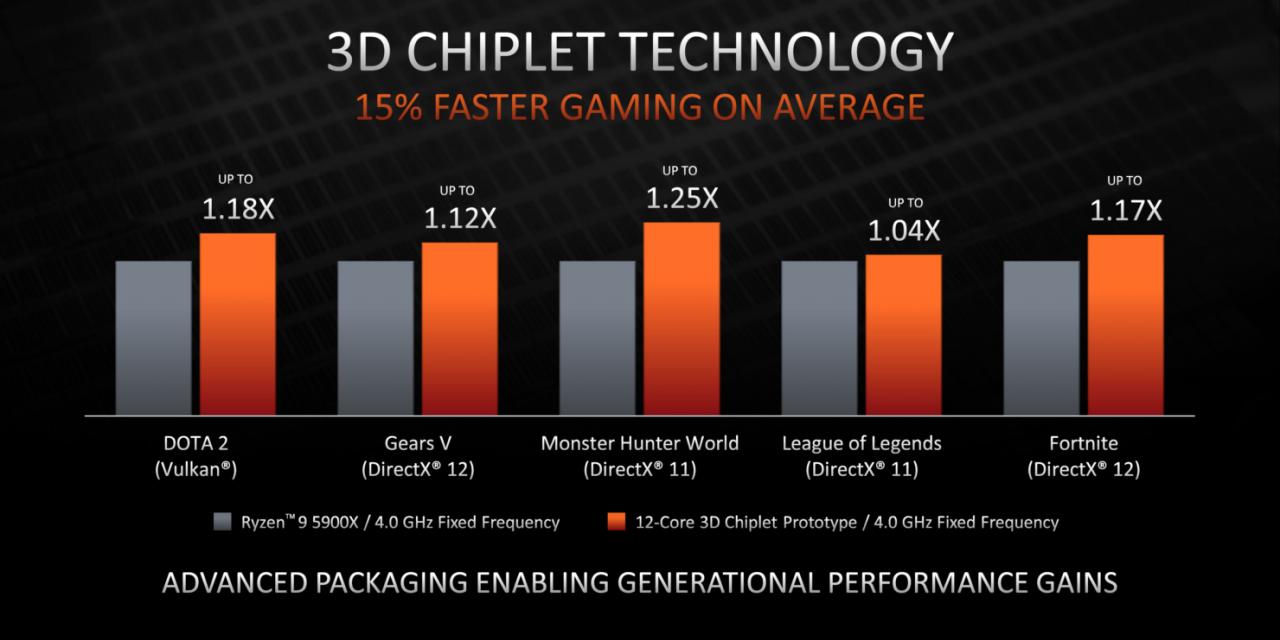
AMD is beavering away on its Zen 4 CPU architecture, but it's not quite done with Zen 3 just yet. Before it moves to a brand new architecture on a new socket in 2022, AMD is going to debut a brand new range of its existing Zen 3 processors using a 3D stacking V-Cache technology, that effectively improves performance in games and productivity software, by significantly reducing latency and improving access to memory.
Zen 3 was a major improvement over previous generation AMD architectures, enabling huge jumps in IPC and moderate clock speed improvements, which ultimately lead to AMD taking the performance crown in just about every test out there, out competing Intel at ever turn. Intel's subsequent Rocket Lake and upcoming Alder Lake, clawed that back, and may retake the prime spot for performance in gaming, but AMD's plan to combat that will see a newly redesigned generation of RX 5000 CPUs using its V-Cache technology.
3D V-Cache effectively stacks chiplets on top of one another, instead of side by side, giving each CCD immediate access to an SRAM chiplet mounted right on top of them. This leads to lower latency, move bandwidth, and greater chiplet density -- that means a big jump in performance, with almost identical hardware otherwise. AMD claims that this reduces power and themal demands, while delivering up to a 25% increase in performance in certain games and applications.
AMD didn't release a timeline of when we can expect these revamped Ryzen 5000 processors to debut, but an end of 2021, very-early 2022 date may make sense. Perhaps a holiday season, or CES launch.
The question now remains, can it compete with Alder Lake?
